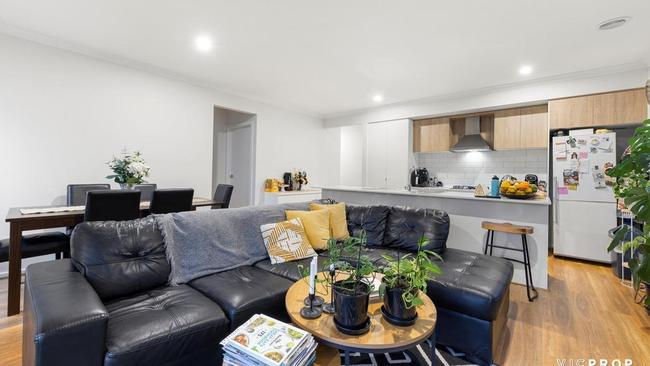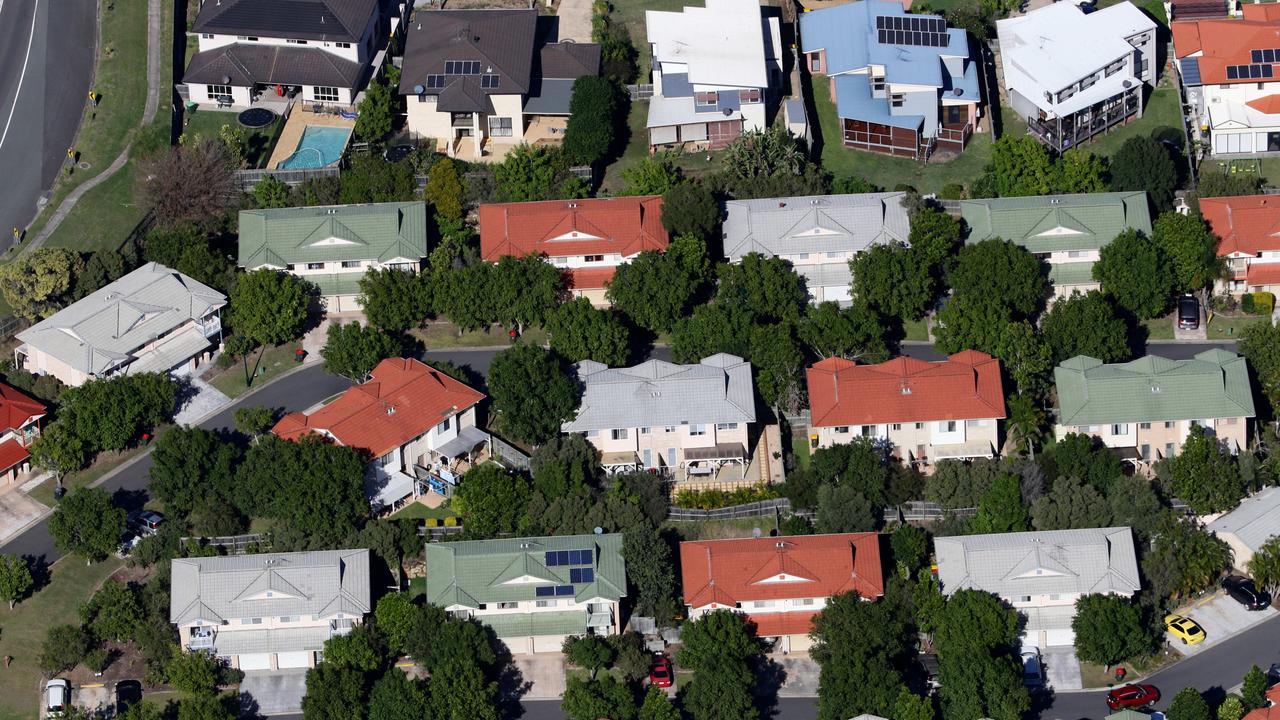Melbourne house hunters need to be earning $70,000 more today than in 2020 to afford a home | Finder
Finder and PropTrack analysis has revealed that a Melburnian needs to be earning $70,000 more than they were just four years ago to be able to afford a typical house. SEARCH YOUR SUBURB.

Property
Don't miss out on the headlines from Property. Followed categories will be added to My News.
House hunters hoping to buy a Melbourne residence at the median price need to be earning $72,900 more than four years ago, with experts now describing home ownership as a “vanishing dream”.
For most of the city’s suburbs, increased home costs and skyrocketing interest rates mean prospective purchasers have needed an at least 50 per cent boost to their annual income over the last three years.
Many Victorians who bought years ago wouldn’t be able to afford the same property today.
New research from Finder and PropTrack shows a $171,778 income, before tax, is the minimum needed to buy a typical Melbourne house in 2024.
RELATED: Melb suburbs where most new homes will be built by 2029
105 areas Melb home buyers can save faster than prices rise
‘Worst practices’: Calls to tighten Victoria’s dodgy rules

The data assumes a 30-year loan, a standard 20 per cent deposit and uses an interest rate of 6.27 per cent in 2024.
In 2020, when the interest rate was 2.72 per cent and the typical home cost $130,000 less than today, it was just $98,817.
Homebuyers looking to buy a house in Mambourin were the worst off, as the minimum amount they needed to be earning a year skyrocketed from $44,862 in 2021 to $120,936 in 2024.
Similarly, those on the hunt for a unit or apartment in Blackburn South needed to have had a $98,000 pay rise in just three years.

While the research firms’ analysis doesn’t go back to 2020 on a suburb level, Finder head of consumer research Graham Cooke said that figures to 2021 showed in many suburbs home ownership was a “vanishing dream”.
“The salary required to purchase a home has more than doubled for most of Australia,” Mr Cooke said.
“Property prices and the cost of debt are significantly outpacing wage growth, and as such, affordability has slipped even further out of reach compared to 2020.”
He added that unless Aussies had switched careers or had a huge change in circumstances, few peoples’ incomes would have increased at a rate that would have matched up.
Mr Cooke noted that it could take years before housing affordability improved and it was unlikely property prices would drop by more than a slight dip.
PropTrack senior economist Paul Ryan said the nation had gone from one of the best times for housing affordability in 2020 to one of the worst in the space of four years.
Mr Ryan said housing supply constraints, rapid population growth and low unemployment had contributed to price rises.
“Supply chain disruptions for builders, plus the cycle of population growth, have contributed to strong demand relative to supply,” he said.


Property Investment Professionals of Australia director and buyer’s advocate Cate Bakos said borrowing capacity had significantly decreased, which had hampered housing affordability.
Ms Bakos said that there were many Victorians who purchased their properties years ago that wouldn’t be able to buy that same home today if they needed to apply for a loan again.
“It doesn’t mean that they can’t pay their mortgage, but when you factor in the bank’s borrowing capacity buffer, they probably wouldn’t be able to buy the home that they’re living in now,” she said.
The Australian Prudential Regulation Authority (APRA) increased the bank’s serviceability buffer, an extra cost percentage imposed on mortgagees through lenders to ensure they can service their loans if interest rates increased, from 2.5 per cent to 3 per cent in October 2021.
Ms Bakos added that families looking to upgrade into a larger property had been impacted the most by lending changes, with many “sitting on properties”.
“A lot of families have had to think strategically about what they’re prepared to compromise on; is it location, is it land size? In a lot of cases, it has been people who do state moves or regional moves,” she said.


Ms Bakos noted it was “pretty remarkable” the city’s housing market was “static”, given there were more homes for sale here than in any other capital and rental reforms and taxes in Victoria had been met with disdain from many investors.
It comes less than a week after ANZ chief executive Shayne Elliott said the requirement for a 3 per cent buffer on home loans was “perhaps too high”.
Mr Elliott added that the nation’s lending environment had become a hub of “financial exclusion”, especially for younger people.
TOP 5 SUBURBS WITH BIGGEST JUMP IN MINIMUM INCOME TO AFFORD A HOUSE: JULY 2021 AND JULY 2024
Rank – Suburb – Min Income 2021 – Min Income 2024 – % Change
1. Mambourin – $44,862 – $120,936 – 170%
2. Blind Bight – $77,102 – $159,141 – 106%
3. Pearcedale – $98,898 – $202,382 – 105%
4. Seaholme – $135,334 – $276,622 – 104%
5. Patterson Lakes – $135,334 – $276,424 – 104%
TOP 5 SUBURBS WITH BIGGEST JUMP IN MINIMUM INCOME TO AFFORD A UNIT: JULY 2021 AND JULY 2024
Rank – Suburb – Min Income 2021 – Min Income 2024 – % Change
1. Blackburn South – $80,680 – $179,182 – 122%
2. Balwyn North – $129,479 – $251,744 – 94%
3. Ivanhoe East – $104,429 – $202,382 – 94%
4. Vermont South – $94,994 – $183,625 – 93%
5. Darley – $40,991 – $78,977 – 93%
Source: Finder, PropTrack
*Note: The data assumes a 30-year loan, a standard 20 per cent deposit, median house and unit values, and uses an interest rate of 6.27 per cent in 2024 and 2.72 per cent in 2021. Suburb-level data goes back to 2021.

Sign up to the Herald Sun Weekly Real Estate Update. Click here to get the latest Victorian property market news delivered direct to your inbox.
MORE: Simone Biles making perfect-10 moves on and off the bars
Late race car drivers’ Prairie-style Melb mansion for sale
‘Shocking’ apartment plunge rings alarm bells
sarah.petty@news.com.au



